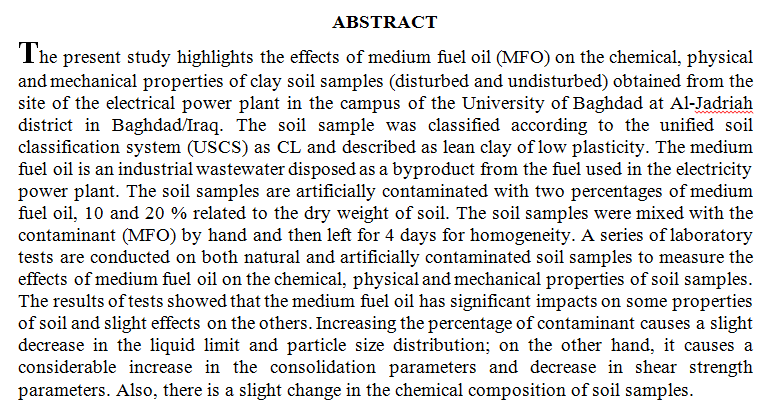
This study investigates the potential of biogas recovery from used engine oil (UEO) by co-digestion with animals’ manure, including cow dung (CD), poultry manure (PM), and cattle manure (CM). The experimental work was carried out in anaerobic biodigesters at mesophilic conditions (37°C). Two groups of biodigesters were prepared. Each group consisted of 4 digesters. UEO was the main component in the first group of biodigesters with and without inoculum, whereby a mix of UEO and petroleum refinery oily sludge (ROS) was the component in the second group of biodigesters. The results revealed that for UEO-based biodigesters, maximum biogas production was 0.98, 1.23, 1.93, and 0 ml/g VS from UEO±CD, UEO±CM, UEO±PM, and U
... Show MoreThis article reviews the construction of organic solar cell (OSC) and characterized their optical and electrical properties, where indium tin oxide (ITO) used as a transparent electrode, “Poly (3-hexylthiophene- 2,5-diyl) P3HT / Poly (9,9-dioctylfluorene-alt-benzothiadiazole) F8BT” as an active layer and “Poly(3,4-ethylenedioxythiophene)-poly (styrene sulfonate)” PEDOT: PSS which is referred to the hole transport layer. Spin coating technique was used to prepared polymers thin film layers under ambient atmosphere to make OSC. The prepared samples were characterized after annealing process at (80 ͦ C) for (30 min) under non-isolated circumference. The results show a value of filling factor (FF) of (2.888), (0.233) and (0.28
... Show More (1)
(1)
 (1)
(1)
The Catharanthus roseus plant was extracted and converted to nanoparticles in this work. The Soxhlet method was used to extract alkaloid compounds from the Catharanthus roseus plant and converted them to the nanoscale. Chitosan polymer was used as a linking material and converted to Chitosan nanoparticles (CSNPs). The extracted alkaloids were linked with Chitosan nanoparticles by maleic anhydride to get the final product (CSNPs-Linker-alkaloids). The pure Chitosan, Chitosan nanoparticles, and CSNPs-Linker-alkaloids were characterized by X-ray diffractometer, and Fourier Transform Infrared spectroscopy. X-ray results show that all samples have an orthorhombic structure with crystallite size in nanodimensions. FTIR spectra prove that
... Show MorePorous silicon was prepared by using electrochemical etching process. The structure, electrical, and photoelectrical properties had been performed. Scanning Electron Microscope (SEM) observations of porous silicon layers were obtained before and after rapid thermal oxidation process. The rapid thermal oxidation process did not modify the morphology of porous layers. The unique observation was the pore size decreased after oxidation; pore number and shape were conserved. The wall size which separated between pore was increased after oxidation and that effected on charge transport mechanism of PS
 (4)
(4)
 (16)
(16)
 (16)
(16)
Burnishing improves fatigue strength, surface hardness and decrease surface roughness of metal because this process transforms tensile residual stresses into compressive residual stresses. Roller burnishing tool is used in the present work on low carbon steel (AISI 1008) specimens. In this work, different experiments were used to study the influence of feed parameter and speed parameter in burnishing process on fatigue strength, surface roughness and surface hardness of low carbon steel (AISI 1008) specimens. The first parameter used is feed values which were (0.6, 0.8, and 1) mm at constant speed (370) rpm, while the second parameter used is speed at values (540, 800 and 1200) rpm and at constant feed (1) mm. The results of the fatigue
... Show More (1)
(1)
